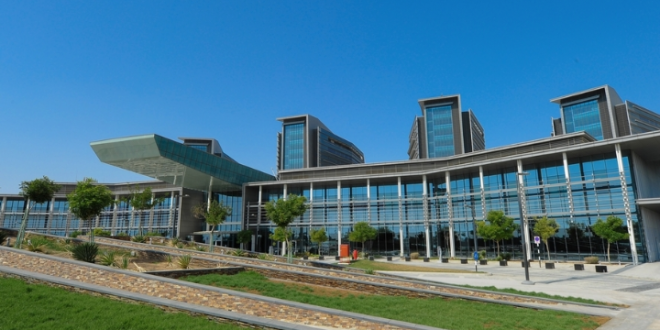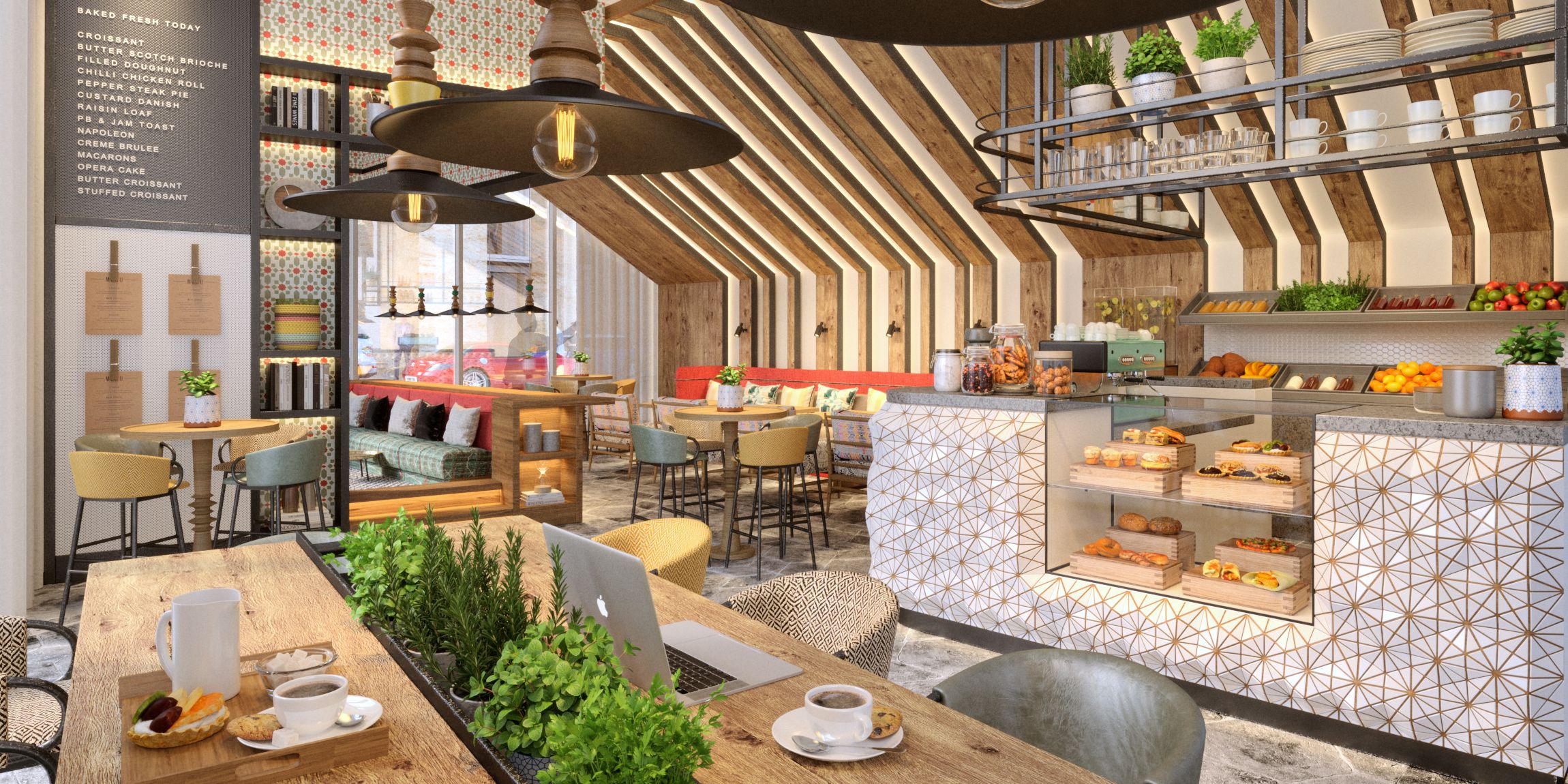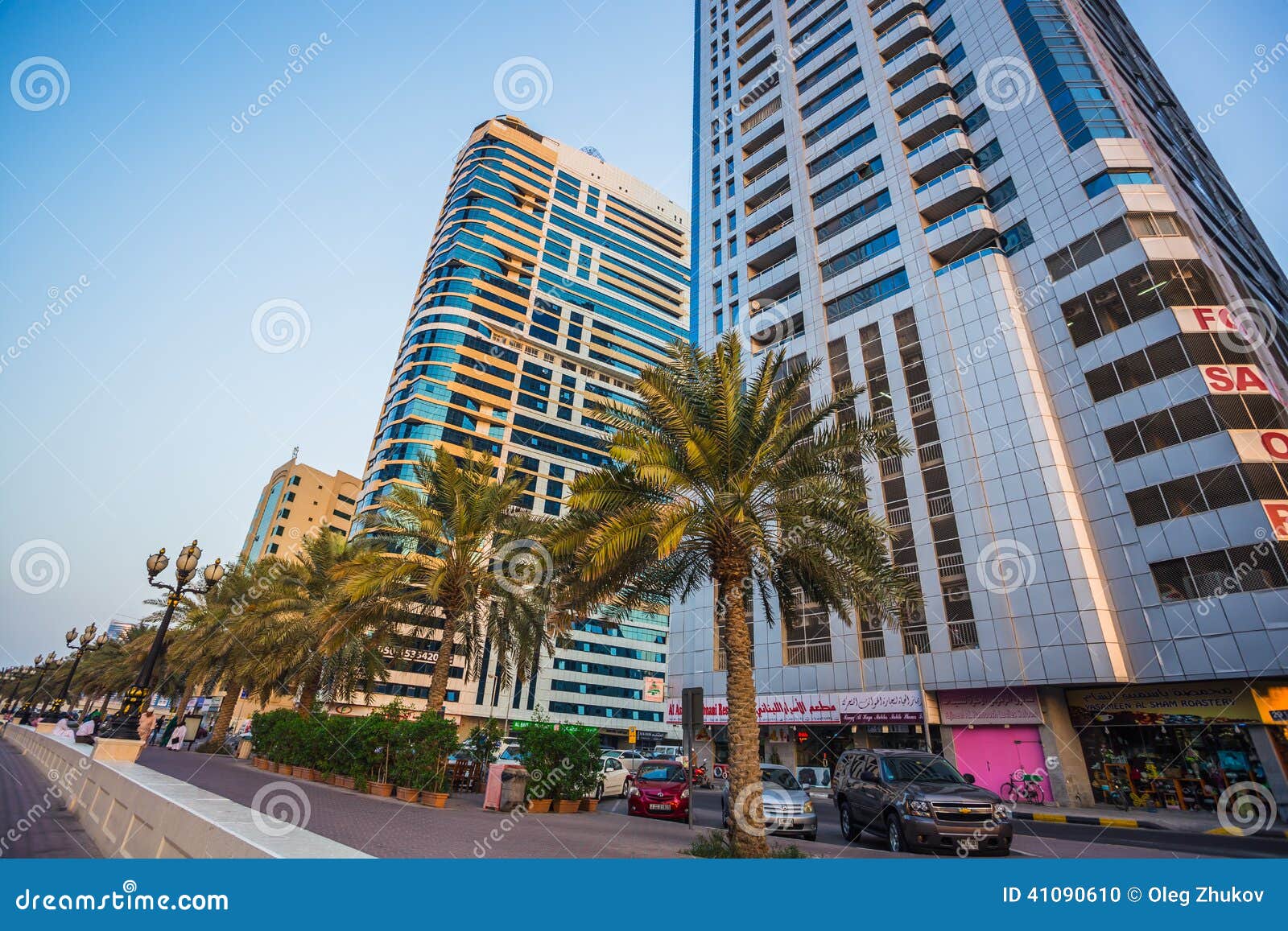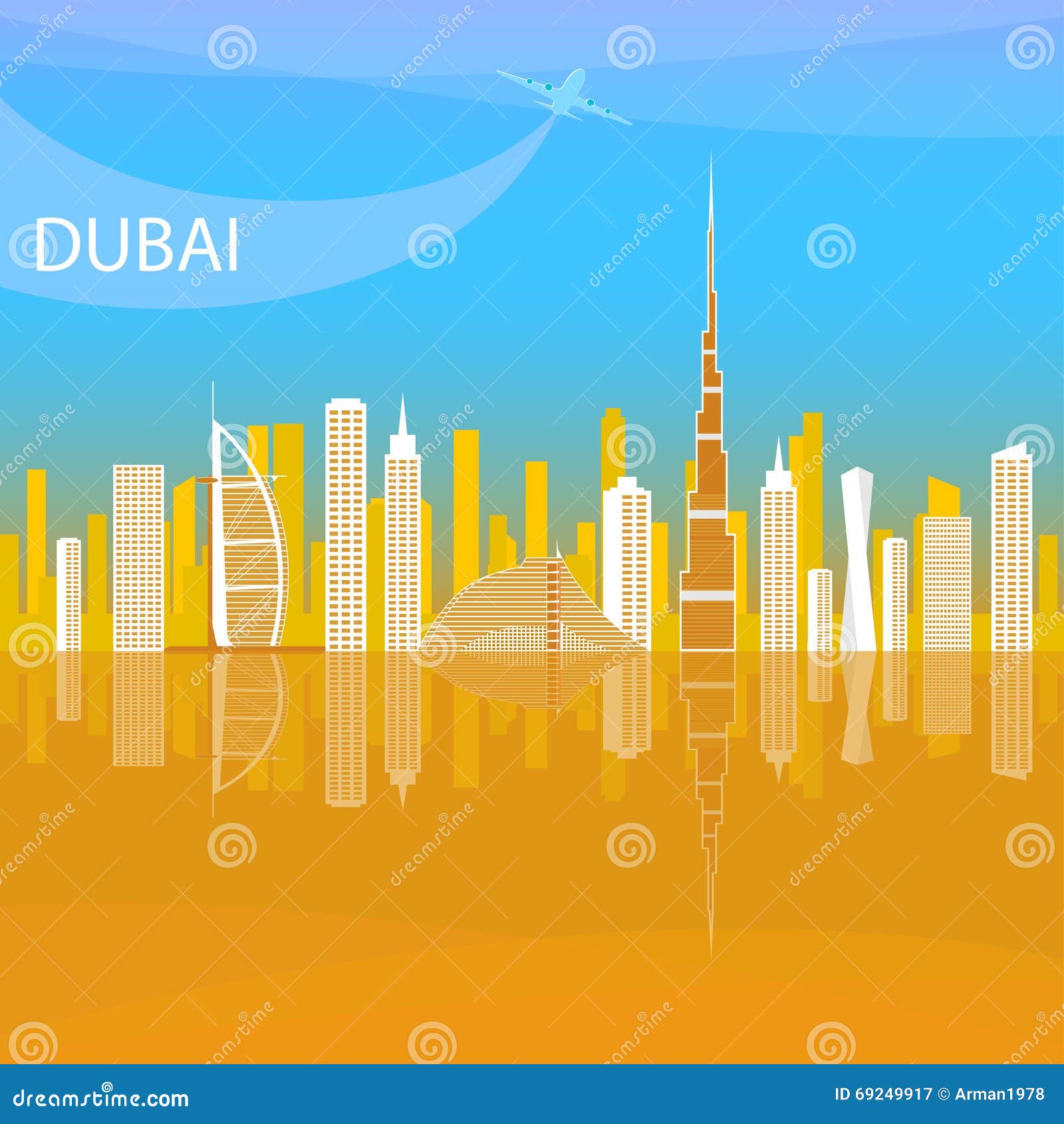One of most well-known tourist destinations in the world, Dubai is the biggest city of UAE. The city is based on the Persian Gulf's southeast coast and serves as the capital city of the Emirate of Dubai. Dubai has emerged as one of the biggest cosmopolitan cities of the world and the business hub of the Middle East. The city is famous for its ambitious constructional projects like the Palm Islands and " The World" which are artificial islands off the coast of Dubai. Dubai's economy is mainly dependent on international trade and to a small extent on oil that is a limited resource in the city.
Tourism, real estate, aviation, and financial services are also major sources of revenue in Dubai. The city is the world's 22nd most expensive city and the most expensive one in the region. In 2014, the hotel rooms in Dubai were ranked as the second most in the world after those in Geneva. The United Arab Emirates is a Middle Eastern country that is located on the Arabian Peninsula's southeast end and is bordered by Saudi Arabia to the south and Oman to the east. The population of UAE was 9.2 million in 2013 of which only 1.4 million were native Emiratis and the rest all expatriates. The UAE is a federation of 7 emirates that was established on December 2, 1971.
The biggest city in UAE, Dubai, is a global city and a major international aviation hub. UAE's economy is mainly reliant on the export of oil and natural gas. UAE's economy is mainly reliant on the export of oil and natural gas. The emirate's Western-style model of business drives its economy with the main revenues now coming from tourism, aviation, real estate, and financial services. Dubai was recently named the best destination for Muslim travellers by Salam Standard. Dubai has recently attracted world attention through many innovative large construction projects and sports events.
The city has become iconic for its skyscrapers and high-rise buildings, in particular the world's tallest building, the Burj Khalifa. Dubai has been criticised for human rights violations concerning the city's largely South Asian and Filipino workforce. Dubai's property market experienced a major deterioration in 2008–09 following the financial crisis of 2007–08, but the emirate's economy has made a return to growth, with a projected 2015 budget surplus.
As of 2012, Dubai was the 22nd most expensive city in the world and the most expensive city in the Middle East. In 2014, Dubai's hotel rooms were rated as the second most expensive in the world, after Geneva. Dubai was rated as one of the best places to live in the Middle East by U.S. global consulting firm Mercer. It is a place of enormous wealth thanks to its oil reserves, but it is also a region with an eye towards sustainable economic and environmental development. Students may visit the most expensive hotel ever constructed in the world, walk along the seaside Corniche, or tour the rapidly developing Saadiyat Island and Yas Island (home to a world-class racetrack, yacht club, and Ferrarri World).
Al Ain (which in Arabic means "The Spring"), also known as the Garden City due to its greenery, is the second largest city in the Abu Dhabi Emirate and the fourth largest city in the United Arab Emirates. It is close to the Omani border, and has a unique desert/mountain landscape that make it a popular tourist attraction for locals and expats alike. In the chart we see the total number of people living in urban slum households, and the urban population not living in slums.
This is available to view by country using the "change country" option in the bottom-left of the chart. Here we see that despite continued population growth and urbanization rates across most countries, the absolute number of people living in urban slum households has also been falling across many countries. DigiMarCon has always been industry leaders of the Hybrid Event experience for years (a hybrid event combines a "live" in-person event with a "virtual" online component), no one needs to miss out on attending our events. Each DigiMarCon Conference can be attended in-person or online giving attendees a choice for the experience they want to have. Attending virtually by viewing a Live Stream or On Demand enables participation by people who might be unable to attend physically due to travel or time zone constraints or through a wish to reduce the carbon footprint of the event.
As the largest Digital Marketing, Media and Advertising Conference series with events in 33 international cities worldwide, across 13 countries, there is bound to be a DigiMarCon Event near you to attend in-person if you can. The capital of the Emirate of Ajman, Ajman is the fifth biggest city in UAE. The Ruler's office, commercial markets, companies, and a large number of national and international retail shops are located in Ajman. The city is also rapidly developing as a major tourist destination in the region. Just 14% live in rural areas and towns, while the remaining 86% live in the urbanized cities within the seven emirates.
The UAE has seen a steady pattern of growth through the years, which is expected to slow down in the near future. Some experts also anticipate that the economy will be slowing down. Only time will tell how the growth of these major cities and the population that resides within them will change in the future. The share of the urban population living in slums by country is shown in the chart.
Here we see that in the latest data, most countries across Asia and Latin America had between 10 to 30 percent of urban populations living in slum households . Slum households were most prevalent across Sub-Saharan Africa; most had more than half of urban populations living in slum households, and some had more than 90 percent. Population estimates of the country in 2000 ranged from 2.6 to nearly 3 million. It serves as the financial, transportation, and communications center of a major petroleum-producing area. Abu Dhabi also has a large port and is home to federal government ministries and embassies.
Dubai is the main trading center of the entire Gulf, has the principal port facilities of the UAE as well as its busiest airport, and has several large commercial enterprises. Al Ain has the country's highest number of Emirati nationals and is developing as a tourist destination with the dry desert air making it a welcome retreat from the coastal humidity of the larger cities. The United Arab Emirates is a country that is made up of seven emirates. Those are Abu Dhabi, Dubai, Sharjah, Ajman, Fujairah, Ras al-Khaimah, and Umm al-Qaiwain. While the country as a whole has a prime minister and federal president, each emirate has its own ruler that oversees the local governments.
The UAE was established in 1971, and since that time, it has seen great population growth. Its largest city is Dubai, which has reached the one million resident milestone with a population of 1.1 million. However, there are other cities within the UAE that have high population counts. The second most populous city, Abu Dhabi, has over 600,000 residents. There are four additional cities with populations that have surpassed 100,000.
Seven cities have populations that are between 10,000 and 100,000, while remaining cities and towns make up the remainder of the population. Note, however, that it is difficult to infer causality between urbanization and these examples. Since urbanization shows a strong correlation with income, such relationships may instead simply show the effect of higher incomes on electricity access, sanitation, drinking water and nutrition. Furthermore, there can also be significant inequalities within urban areas; this is evidenced by the fact that across many low-to-middle income countries a high share of the urban population live in slum households .
Here we have a handful of countries — such as Mongolia, Paraguay, Uruguay, Liberia, Senegal and Afghanistan — where more than half of the country's urban population live in its largest city. Overall, this share tends to be higher in countries across Africa and Latin America; a share of 30 to 50 percent is common. Rates across Europe, Asia and North America are highly variable, ranging from over 40 percent to less than 10 percent. The problem, however, is that countries adopt very different definitions of urbanization. Not only do the thresholds of urban versus rural vary, but the types of metrics used also differ.
Some countries use minimum population thresholds, others use population density, infrastructure development, employment type, or simply the population of pre-defined cities. The population of the UAE is overwhelmingly urban, with more than 90 percent of the people living in cities. The largest city, Abu Dhabi, the federal capital, had an estimated population of 475,000 in 1992. Dubayy, the second largest city and the UAE's main port and commercial center, had an estimated population of 395,000.
The residential neighborhoods along the Persian Gulf coast north of the center of Dubayy were contiguous with those of the city of Sharjah . About fifty kilometers north of Ajman is the city of Ras al Khaymah . The largest inland population concentration is in the contiguous villages and residential developments at Al Ayn in Abu Dhabi's Al Buraymi Oasis. Besides being a tranquil respite from the country's hyper-urban cities, the Al Ain Oasis is actually still a partially functioning date farm and is home to some 100 different varietals. An ancient falaj irrigation system channels fresh spring water from the nearby Hajar Mountains, which along with a system of wells, allows palms to flourish in the middle of a desert. In the morning, we will leave from the Hotel towards the Abu Dhabi city, capital of the United Arab Emirates.
Abu Dhabi is the largest city in the seven Emirates and is where most of the embassies and oil companies are located. Our tour begins with a stop at the famous Sheikh Zayed Mosque, one of the most beautiful mosques in the world. Then we will head to the city, seeing the sheikh palaces and stopping in front of the majestic Emirates Palace Hotel for a photo shoot session.
We will take a short drive through the city to see the styles and the heritage of the culture and the life from the past. We will see the exhibition being held on Saadiyat Island with its impressive museum projects. Finally, we will discover the city of the future, all based on alternative energies. We will cross the Dubai Creek on board the "Abra", a famous water taxi, to visit the gold and spices market. Then we will stop at the "Union House", and then continuing to the Jumeirah Mosque. After that we will cross the Jumeirah sunny beach to see the luxurious Burj Al Arab Hotel.
We will drive then through the Sheikh Zayed Road, from where we can appreciate the great skyscrapers of the city. Finally, we will pass by Downtown Dubai for a panoramic visit, where you will find one of the highest towers in the world, the "Burj Khalifa" next to the impressive shopping mall known as the Dubai Mall. In the afternoon we will leave to visit the Emirate of Sharjah, located near Dubai. The first visit we will make, it will be in Sharjah, the third largest Emirate renowned as the "cultural capital" because of its commitment to art, culture and heritage. We will visit the University of Sharjah inaugurated in 1998, from there we will go to the Cultural Roundaboutwhere we will be able to take photos of the Mosque. We will stop at the Blue Mall in Sharjah where you will be able to haggling on your purchases of gold, electronics, etc.
Then we will visit the Souq-Al-Masqoof neighborhood, the old part of the city that was covered and now functions as a shopping area. The 2nd largest Emirate, Dubai shatters the stereotypes of Eastern and Western cultures while simultaneously and relatively seamlessly mixing them together. The pace of development in Dubai is breathtaking, and the urban landscapes are constantly changing. Students may have the opportunity to tour some of the opulent malls (and snow ski in one!) as well as the traditional souqs along Dubai Creek . Whether riding a traditional abra across the creek or the new state-of-the-art metro system, students will be able to experience this exciting city in many ways.
Being one of the most premier tourist destination in UAE, one can find a lot of places for accommodation being here. The second largest city in the Emirate of Abu Dhabi, Al Ain is about 160 km away from the famous Abu Dhabi. Housing the largest proportion of the Emirati nationals, Al Ain is one of the most visited places in UAE, being set up in a beautiful green environment; this city is also famous by the name of the Green City. The American University of Sharjah is ranked seventh in the Arab region rankings and joint 348th in the global rankings. Licensed both in the UAE and in the US, AUS offers courses based on the US model of higher education, and is a popular choice among international students, resulting in a very diverse student body.
It's located inSharjah, which was a new entry in theQS Best Student Cities 2016. Abu Dhabi, the capital of the Emirate of Abu Dhabi, is UAE's second most populous city. Abu Dhabi houses the Abu Dhabi Emiri Family and the federal government offices of the region.
The city is a modern metropolis and a major political, economic, cultural, and commercial center in the region. Like Dubai, Abu Dhabi also has a multicultural and diverse society. However, time and again, human rights organizations have heavily criticized the government for exploiting foreign workers and treating them in an improper manner. Across all countries urban shares are projected to increase in the coming decades, although at varied rates. By 2050, it's projected that 68 percent of the world's population will live in urban areas . In fact, by 2050 there are very few countries where rural shares are expected to be higher than urban.
These include several across Sub-Saharan Africa, Asia, Pacific Island States, and Guyana in Latin America. Dubaimay be the second-largest emirate in the country, but it holds the biggest population, majority of which are expats from around the world. Dubai has a thriving business and tourism industry, having a skyline dotted by majestic buildings and towers. Here, you will find the Burj Al Arab (a 7-star hotel), the Burj Khalifa , and the luxurious Palm Trilogy islands, among many other attractions. Reuters, the news and media division of Thomson Reuters, is the world's largest multimedia news provider, reaching billions of people worldwide every day.
Reuters provides business, financial, national and international news to professionals via desktop terminals, the world's media organizations, industry events and directly to consumers. Being touted as the third biggest city in UAE, Sharjah is located on the Arabian Peninsula which is situated along the gorgeous gulf of Persian which is on the southern coast. Being incredibly famous as the capital of Emirate of Sharjah, contributing to the GDP of UAE by 7.4%, Sharjah is a major center of industry and culture.
Now there has been a major ban on alcohol in the Emirate of Sharjah, also famous as the best place to study for University students. One can drive to the south and reach the world renowned for oil, the famous Abu Dhabi which is the capital of UAE also famously known as the popular meeting point for culture, sport and leisure. UAE is one of those countries that one can visit for a relaxing time and experience some of the marvels of the world while being on an Top Cities United Arab Emirates Tour that can be accessed by booking holiday packages to UAE. Placed 284th in the global rankings, United Arab Emirates University comes fifth in the Arab region ranking. It's based in the city of Al Ain in the emirate of Abu Dhabi, and is the oldest university in the country – though still relatively young, having been established in 1976. Its alumni community includes many powerful leaders in the fields of government and business.
Al Ain is the second biggest city in the Emirate of Abu Dhabi after Abu Dhabi. The first President of UAE, Sheikh Zayed bin Sultan Al Nahyan, was born in this city. The city also houses the largest (30.8%) proportion of the Emirati nationals. Al Ain is developing rapidly as a tourist destination in the region.
It has several tourist attractions like the Al Ain National Museum, Hili Archaeological Park site, several restored forts, and the Al Ain Palace Museum. Why, when most countries are expected to be majority urban, does the global total just over two-thirds? This seems low, but results from the fact that many of the world's most populated countries have comparably low urban shares . For example, India (expected to be the world's most populous country), is projected to have an urban share of only 53 percent in 2050. In the map here we see how the share of populations living in urban areas has changed in recent curies. Data on urban shares dating back to 1500 are available only for select countries, with an estimated share at the global level.
Using the timeline on the map you can see how this share has changed over time. In the chart we see the world mapped based on the population of each country's capital city. In 2018, Japan's capital — Tokyo — had the largest population of the world's capital cities at over 37 million people. This was followed by Delhi at over 28 million; Mexico City at 21 million; and Cairo with 20 million. Few countries in history have experienced, in less than four decades, a huge shift in income and development comparable to that of the United Arab Emirates during the last part of the twentieth century.
The UAE developed a public national educational system in a thirty year period that is similar to what Western countries established in over a hundred year period. Since the early 1960s the UAE has emerged from relative obscurity in global affairs to become one of the wealthiest and most dynamic of the smaller countries of the world. The rapid infrastructure development in virtually every corner of the country provides visual evidence of immense change. Public and private construction and modern consumption patterns are in evidence throughout the country.




























No comments:
Post a Comment
Note: Only a member of this blog may post a comment.